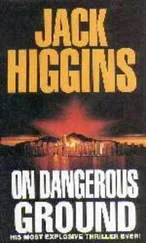One of the quartermasters hurriedly knocked on the wardroom door and leaned in. “XO, the Captain says we’ll be on station in twenty-five minutes.”
The XO looked at Davis. “You’ll need to launch one of the ROVs first. We’ll need its camera and lights for the COB and Harris so they can rig the Manta and attach themselves to it.”
“They can only do that after I’ve launched it,” Jerry reminded him. “The docking skirt is too close to the tie-down points. They’re the same ones they use to hoist the Manta off the boat.”
“Understood,” answered the XO, “just hold it steady for them.”
Reynolds didn’t look happy. “XO, sir, this is a really complicated dive. We’re moving too fast. I can’t build a proper dive plan. What if we leave a tool behind on the sub? What if the Russians show up again? What about the crates?”
Bair nodded. “I agree with you, COB, but the Captain wants this done ASAP. I’m beginning to agree with him that the Bear was no accident. We’re on borrowed time. We do this quickly, then we leave the neighborhood forthwith.”
He sighed. “Dr. Patterson’s rigging a sample container that will be radiation-proof. We’re hoping that whatever’s in those crates will fit inside. You’ll have cameras to take photographs. Dr Davis will monitor the radiation with the ROV and will flash the danger sign if the reading is too high. And the instant you get that signal, you drop everything and hop the Manta for a fast ride home. We’ll stand by with a decontamination team ready, just in case.”
The meeting ended as quickly as it had been held. Davis went to help Patterson and Jerry went aft to help the COB and Harris with their preparations.
Sometimes it is necessary for men to go topside when a submarine is underway. Because of the low freeboard and the chance of being washed over the side, subs carry safety harnesses. Similar to a parachute rig, they could be attached to a special track in the hull. It was simple to adapt two so they could use the lift points on the Manta. What wasn’t simple was fitting the harnesses to Reynolds and Harris on top of all their diving gear.
By the time they arranged the straps so they didn’t interfere with the tanks or tools or the ability to move, Hardy was calling for Jerry to launch the Manta.
“I don’t have a camera, but the passive sonar should pick up taps on the hull,” Jerry reminded them.
“Yessir,” answered the COB. “Just keep the active sonar off while we are in front of the Manta. I hate getting pinged. It feels like someone is hitting you with a two-by-four.” At close range, the pressure wave generated by an active sonar could stun a diver.
Jerry grinned reassuringly. “I’ll pull the breaker and red-tag the switch.” Then more seriously, he added, “I wish I was going with you, Master Chief.”
“In a sense, you will be, since you’ll be flying that UUV that we’ll be riding — and that’s pretty important to Harris and me.” Reynolds then reached over and grasped Jerry by the shoulder. “Actually, I’m glad you’ll be on the boat.” Jerry’s puzzled expression caused Reynolds to grin. “Mr. Mitchell, you’re damn good with that Manta. Not to put you under any undue pressure, mind you, but I’m expecting you to bring us home.”
Reynolds extended his hand; Jerry grasped it firmly and said, “Count on it, COB. Good luck and be safe.”
“Always, sir,” said Reynolds, winking.
Jerry turned and left them by the forward escape trunk with two enlisted men. Between the COB and Harris and net full- of tools, it would take two cycles to get them all outside.
By the time he reached the torpedo room, Emily already had Huey out and trained on the Manta hangar. Jerry started the launch sequence and realized that although he’d watched films of the prototype Manta being launched, he’d actually never seen the launch from Memphis.
The hangar was a raised rectangle halfway back the hull, about where it started narrowing toward the screw at the stern. The Manta nestled in a cutout, half-buried to reduce drag and flow noise when Memphis was underway. As Jerry released the latches, the Manta, slightly buoyant, slowly floated up and away.
The standard launch sequence automatically positioned the Manta five hundred yards off the sub’s port or starboard beam. This was out of the question, so instead Jerry overrode the sequence and just did his best to hold the UUV stationary over the aft hull. He resisted the temptation to bring the Manta forward to the divers. They’d discussed it in the wardroom, but even with the ROV’s camera to help him see, it wasn’t built for close-in maneuvering. He couldn’t guarantee that the Manta wouldn’t strike the sub — or God forbid, one of the divers.
Memphis floated, dead in the water and neutrally buoyant, in forty fathoms of water. Although Hardy would have preferred hugging the bottom, he’d brought her shallow, to a keel depth of eighty feet. Since Memphis stood sixty feet from her keel to the top of the sail, that left precious little water above them, but it made the divers’ job a lot easier. At sixty feet, they had almost an hour to get to the barge, enter, open a crate, retrieve a sample, and then return. At a depth of ninety feet, they would have had only thirty minutes.
It was hard to trim the Manta to neutral buoyancy. Jerry found he had to use a little motion to keep the slightly buoyant UUV from rising. He concentrated on keeping the nose down and moving as slowly as possible. He also had to tell Emily what he was doing, so she could anticipate his movements and keep the lights and camera properly positioned. It was dark enough at this depth so that the lights were essential. Without Huey’s lights, Reynolds and Harris might never find the Manta. Luckily, only Huey had a control cable. If both vehicles had used wires for control and maneuvered so closely, they would constantly risk entangling them.
He waited impatiently for Reynolds and Harris to reach the Manta. It was easy for Jerry to imagine, or remember, what it felt like as the water filled the escape lock — the cold and the pressure. This wasn’t sport diving off some colorful tropical reef. It was hard to move quickly or gracefully, and you couldn’t waste time. It was work. The dry suit mitigated the cold, but it still sucked the energy out of your arms and legs, turning them to wood.
It took five minutes for the two divers to appear in the screen and reach the Manta. There was no way to find out the reason for the delay. They might have tangled a harness or had problems with the tools, but whatever it had been, they were ready to proceed.
There were three lift points on top of the Manta, and Reynolds and Harris dragged the cargo net to the first one, located in the center of the forward part of the vehicle. After hooking up the bag without incident, they swam aft. As the Manta broadened out into a pair of wings, there were two more points, one on each side of the tail. Jerry watched through the ROV’s camera as Reynolds made sure Harris was secure, then attached himself.
“All right, I’m turning to port and I’ll bring up the speed slowly to five knots.”
“Understood,” Emily replied.
Jerry gingerly applied some speed and turned the Manta toward the barge, wanting to hurry but moving slowly because of the divers. Davis managed to keep the Manta in the camera’s lens, even as she turned to follow. The plan was to keep the Manta in front of Huey so they could watch the divers for any sign of trouble.
As he increased speed, ordering the Manta from three to four to five knots, Jerry also carefully watched the Manta as well as the divers. There was no way to predict the effects of the weight and drag on the Manta’s speed or stability — or its battery life, he added, while glancing at the display. There was no perceptible feedback through the controller. The Manta was normally well behaved, but they were outside the design envelope here, and he had no way to tell what it would do.
Читать дальше












